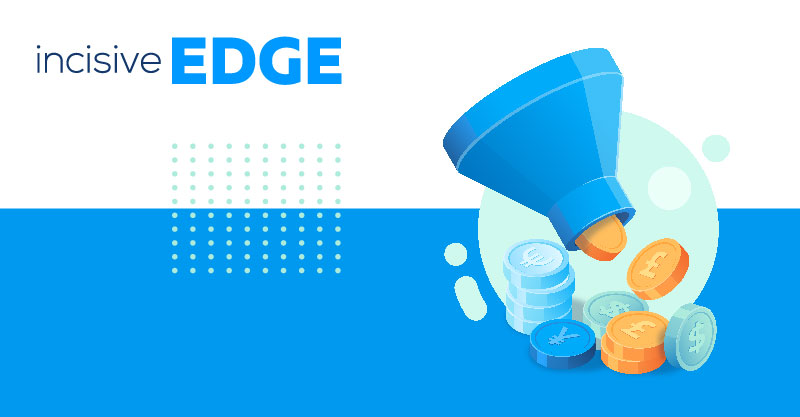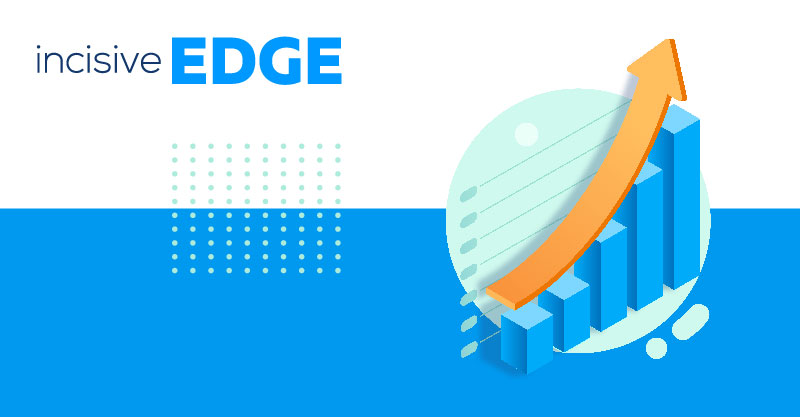The sale of products and services to your target audience is critical for survival in the Business to Business or B2B sector. Identifying potential customers and turning them into paying consumers provides a pipeline for stability and incremental growth of your enterprise. Achieving this objective is the essence of B2B lead generation and lead nurturing.
The HubSpot State of Marketing Report 2021 reveals that marketers state their top marketing priority for the next 12 months is generating more leads.
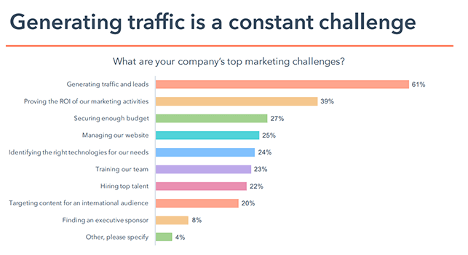 (Image source: HubSpot)
(Image source: HubSpot)
Why is lead generation important for B2B enterprises? What are some efficient lead generation tools and strategies for B2B marketers? What tools are available for B2B lead generation?
In this comprehensive guide on B2B lead generation, we'll be delving into the most effective strategies for acquiring high-quality business leads, as well as optimising B2B sales processes. Our primary focus is to provide insights and solutions to questions surrounding these critical elements of business-to-business growth. It's important to note that the primary objective of lead generation campaigns is not just to secure leads but also to nurture and transition those leads through various funnel stages. This process is essential for converting them into loyal paying customers.
Let’s begin by defining what business leads actually are and discussing their relevance to sales and marketing teams across the various stages of the sales funnel.
What Is a Lead?
Essentially, a lead is any individual or organisation that demonstrates an interest in a product or service that a company is offering. Going further, we may define a lead as a new contact or prospect generated or identified through any kind of marketing strategy.
In the case of a B2B lead, the prospect will be someone who represents the interests of a commercial organisation, rather than a private individual. Such a representative will identify themselves as a potential lead through some activity that indicates an awareness and interest in your product/service offerings, or the marketing campaigns that you employ to promote them.
This might, for example, include reading a blog post then downloading an eBook that describes your product range, or requesting a free trial of your software.
The contact information associated with a B2B lead, which represents a potential business client, product of the best B2B lead generation strategies, which is the method employed to acquire such leads, will vary from company to company. The specifics of this data depend on the circumstances under which these potential clients sign up for your download or trial. Typical data may include a name, job position, company name, business email address, or phone number.
The process of lead generation is never linear. You can acquire leads in several different ways. Some individuals or organisations prefer investing their efforts into search engines for a long-term organic solution while others might try PPC and attempt to get new leads with a Facebook or Google Ads Campaign.
It is important to mention that not all leads are created equal, however. Let’s take a look at the different types of leads you can generate for your sales funnel.
Check out the following articles to learn more about b2b lead generation:
- The Best Beginner's Guide to SaaS Lead Generation Today
- 6 Powerful Lead Generation Strategies for B2B Companies
- ABM Lead Generation: How to Reel in High-Value Prospects
- Top 5 Tips for using PPC for B2B Lead Generation Strategies
Marketing Qualified Leads (MQLs)
A marketing qualified lead or MQL is a prospect who has interacted in some way with the efforts of your marketing teams, but is not yet ready to receive a direct communication from your sales team. This might, for example, be someone who fills out a form on one of your landing pages in order to receive a free offer.
Sales Qualified Leads (SQLs)
A sales qualified lead or SQL is a prospect who has in some way expressed a direct interest in purchasing one of your products or services and becoming a paying customer. For example, a sales qualified lead may be some who has requested a price list, or inquired about payment terms.
Product Qualified Leads (PQLs)
A product qualified lead or PQL is someone who has actual experience of using your product, and is now expressing an interest in buying it. Prospective customers like this will typically have signed up for a free trial of your product or feature-limited version of your software, with an option to upgrade to the full version. Such prospects are a high priority for sales teams, who can step in to seal the deal and acquire new paying customers or subscribers.
Service Qualified Leads (also SQLs)
This other form of SQL, the high-quality service qualified lead, refers to a valuable and promising prospective customer who demonstrates a strong intention to make a purchase through their interactions with your customer service team. For example, a potential customer in this category might convey to Customer Support their desire to upgrade their subscription.
The pay-per-click advertising model, a widely used digital marketing approach, plays a pivotal role in attracting potential customers to your offerings. It allows businesses to reach their target audience effectively and influence their decision-making process through carefully crafted ad campaigns.
What Is Lead Nurturing?
In essence, lead nurturing is the process of converting a potential lead into a paying customer. For B2B online lead generation, this typically involves listening to the needs of your prospects at each stage of the buyer’s journey and communicating solutions to them. In this way, you build a relationship with the prospect and foster trust.
Since B2B prospects tend to seek solutions to their problems through various channels, it is important to expand your lead nurturing activities across the many touch points that they habitually use.
Why the Lead Generation Process Is Important for B2B
The lead generation process involves attracting potential customers to your business, then developing their interest in your product or service through lead nurturing until they become paying customers. For B2B commerce, lead generation (or lead gen for short) is critical in enabling sales and marketing teams to accomplish this task. The lead generation process provides a framework for them to develop a sales pipeline that can sustain the enterprise in the long term.
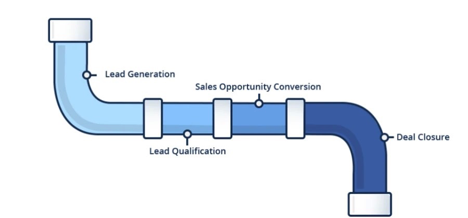
(Image source: LeadFeeder)
Beyond this, B2B lead generation brings a number of other benefits, which we’ll now explore.
Lead Gen Is in Line with the Buyer's Journey of Today’s B2B Consumers
Modern B2B consumers tend to research the products and services they want online before reaching out to potential suppliers. As such, they tend to already be familiar with a product or service before they ever contact a sales team.
Solid lead generation strategies enable businesses to position themselves as thought leaders, experts, and valuable resources to potential customers at every stage of the buyer’s journey. This is achieved not only by providing a desired or “must have” product or service, but also by being able to answer their questions and address their pain points along the path to purchase.
B2B Lead Generation Promotes Trust in Your Organisation
As a follow-on to the last point, an effective marketing strategy that pushes valuable content to website visitors, through landing pages, and across social media platforms can not only generate leads, but also position you as a trusted expert who offers real solutions to real problems.
This foundation of trust can be the platform for building lasting relationships with quality leads, the generation of more leads, and promoting loyalty in existing customers.
B2B Lead Generation Optimises the Sales Process
An effective lead generation strategy should incorporate a lead scoring mechanism. In lead scoring, you assign a numerical or point value to each prospect denoting their level of maturity as a lead, based on the information they have provided, behavioural clues, and their position in the sales funnel.
The lead score enables your sales and marketing teams to assess whether potential leads are ready to purchase, or still at other stages of the buying process. This knowledge can help prevent your sales team from wasting their time and effort on activities that are unlikely to yield revenue. Lead scoring can also suggest the most appropriate course of action for converting potential leads into paying customers.
Lead Generation Performance Assessment Helps in Scaling Your Customer Acquisition
Effective lead generation strategies lend themselves to performance assessment through the measuring of Key Performance Indicators or KPIs. These performance criteria will depend on your business objectives, target audience, and sales process. Proper measurement and analysis can assist in scaling your customer acquisition programme.
B2B Lead generation Helps to Increase Your Return On Investment (ROI)
A good lead generation strategy will help to clarify objectives and courses of action for your sales and marketing teams. This will optimise their efforts, improve their efficiency, and ultimately translate into a greater ROI for the endeavour.
Some Effective Lead Generation Strategies
In this section, we’ll consider some effective lead generation strategies and best practices for lead generation.
Understand Your Buyer Personas and the Buyer’s Journey
You should first establish where your prospective customers are most likely to come from. According to Hubspot, the three best B2B lead sources are SEO (14%), email marketing (13%), and social media (12%).
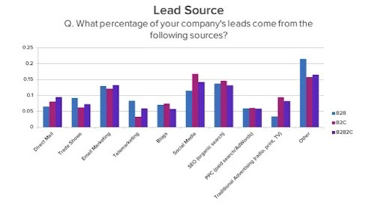 (Image source: HubSpot)
(Image source: HubSpot)
As leads are identified, you must then qualify them according to which buyer persona they fit. Buyer personas are semi-fictional constructs with characteristics of your ideal prospect (demographics, job position, etc.). Your lead generation strategy needs to focus on what challenges or pain points these individuals are experiencing, and how you can provide real solutions.
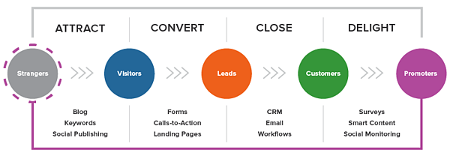
(Image source: HubSpot)
Your approach to problem-solving will depend on which stage of the buyer’s journey your prospect is currently at:
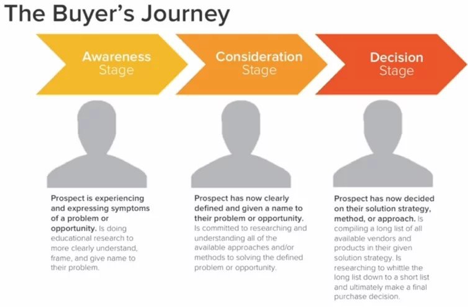
(Image source: HubSpot)
- Awareness: Realising that they have a problem, and that a product or service solution exists.
- Consideration: Weighing up alternative solutions, including their features and pricing.
- Decision: Making the commitment to buy.
You should also consider the channels or touch points that leads use at each stage. For example, a blog post or email marketing might be appropriate at the Awareness stage, a free trial or demo could sway the prospect during Consideration, while word of mouth on social media channels or customer referrals might influence their final Decision.
Generate Leads Through Websites and Landing Pages
On your website or blog, you should create enticing offers or “lead magnets” for visitors at all stages of the sales funnel. Each offer should have a clear Call To Action (CTA) that leads to a dedicated landing page.
You can use smart CTAs, which display customised calls depending on each visitor’s position in the buyer’s journey for a more personalised experience. Don’t forget to ask for a non-intrusive amount of contact information from each prospect who signs up.
An effective landing page should be dedicated to a specific product or service that solves a particular problem afflicting your target audience. Ideally, you should affirm the effectiveness and relevance of this solution with social proof. For example, you can share customer success stories, positive reviews, or testimonials.
Optimise Your Content for Long-Tail Keywords
A long-tail keyword is a search phrase having three or more words in it. They are a tool for search engine optimisation with a highly specific focus. In practice, this means that very few people will use such phrases, which narrows their focus to features or issues that relate directly to your product or service.
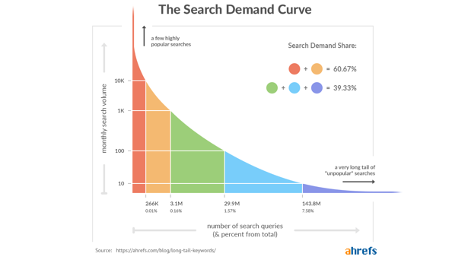
(Image source: aHrefs)
You can further refine your usage of keywords by researching those words and phrases most favoured by your competition. This can provide clues as to profitable key phrases that will enable you to fine-tune your own lead generation strategy.
Optimise for Mobile
With Millennials and Generation Z entering the B2B workforce in greater numbers, the population of digitally native buyers is increasing. In fact, it’s reckoned that around 60% of B2B buyers first check for information using their mobile devices. Mobile optimisation is also enabling B2B businesses to experience a shorter sales cycle.
Fortunately, there are tools and platforms that make it possible to optimise websites and digital content for mobile consumption in a few easy steps.
Keep Testing Alternatives
You should run A/B split tests on key web pages and site elements, to determine how the alternatives perform in relation to each other. Even a small tweak can make a huge difference in the way an element or page is perceived.
A/B testing can also help marketing teams optimise lead nurturing campaigns and gain a better understanding of how to approach and interact with potential leads to increase the chances of conversion.
Tools for Lead Generation
B2B organisations can boost the effectiveness of lead generation strategies by using specialist tools to automate processes, perform data analysis, and provide information or resources. Some examples include the following.
Call To Action (CTA) Templates
A number of online resources provide free PowerPoint templates for creating CTA buttons and panels. You can use them on your website, blog, or landing pages.
HubSpot Lead Generation Software Tools
This free utility from HubSpot includes a number of lead generation tools and features. For example, a web scraping tool can scour online forms for contact information and lead capture and add these findings to your existing contact database.
The software also provides design tools for creating “hello bars”, pop-ups, and slide-ins (or “lead flows”). The HubSpot platform also offers a free Customer Relationship Management (CRM) tool.
Facebook Lead Ads
Facebook Lead Ads help B2B users of social media marketing to capture leads directly from the platform. There is an additional feature that lets businesses put a simple CTA button at the top of their Facebook page, which links directly to their corporate website.
LinkedIn Lead Generation
Of all the social media channels, LinkedIn is the one with the most direct B2B focus. LinkedIn Lead Gen Forms are the platform’s direct response to B2B lead generation. The forms automatically capture a user’s profile data when they click a CTA button, providing a straightforward mechanism for organisations to generate leads.
Lead Generation Businesses
Lead generation sites and services operate to a simple business model – they act to generate leads for a specific organisation. This organisation may be a commercial business, an educational establishment, or any other institution. The objective of the lead generation business is to find qualified leads for their clients, who can then be converted into paying customers.
Generally, for each qualified lead that the lead gen business sends to a client, the client pays a finder’s fee. This money may be charged as a monthly retainer, or as an individual payment for each viable lead.
A B2B Lead Generation Partner
Particularly for startups and small to medium-sized enterprises (SMEs), it’s important to think in the long term, and build up a customer base that can sustain the business for the foreseeable future.
However, performing the necessary research and due diligence needed to identify the right sort of clients takes time, effort, and money. So too does creating content and managing the marketing campaigns and sales process necessary for sustaining an effective lead generation strategy.
For this reason, it may be more economical and practical for your business to partner with an organisation that has a proven track record in B2B lead generation, lead nurturing, and content marketing.
If you’d like to know how Incisive Edge can assist in your B2B lead generation efforts and help your sales and marketing teams in generating leads and guiding potential clients down the sales funnel, get in touch with us.
